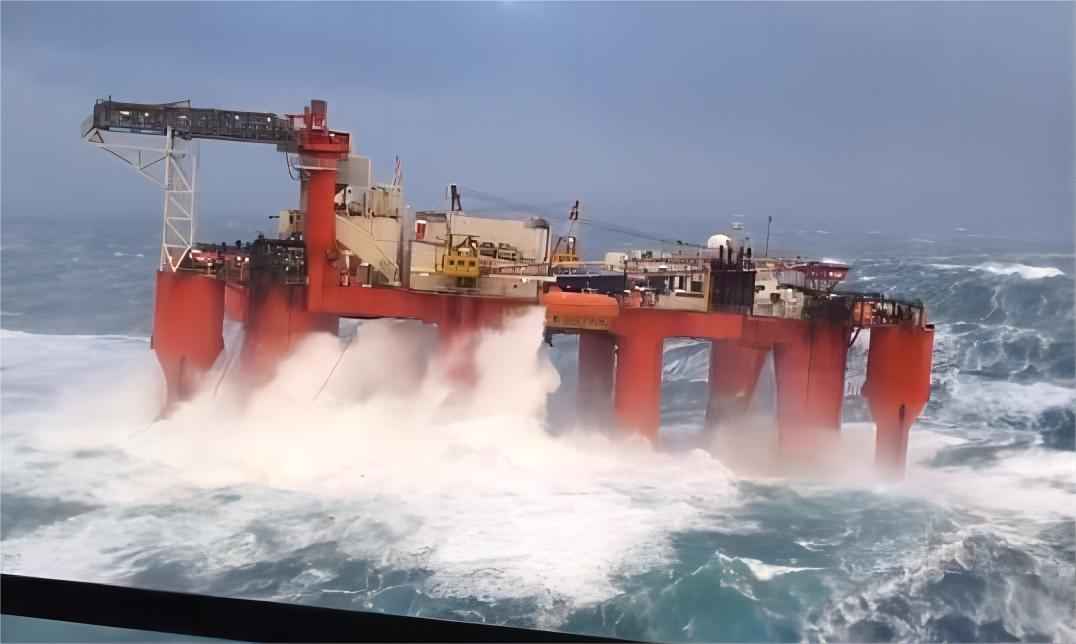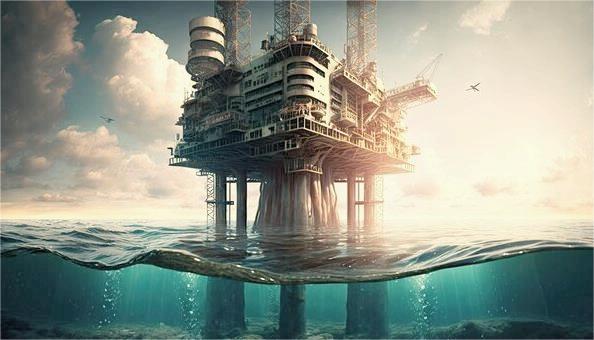Oil rigs, those towering structures that adorn the oceans and seas, are pivotal to the global oil industry. These colossal platforms are designed to extract oil and natural gas from beneath the seabed, a process that's intricate and demanding. Among the questions often asked is whether oil rigs move during adverse weather conditions. In this piece, we'll delve into the factors influencing oil rig movement and the precautions taken to maintain their stability in challenging weather.

Understanding Oil Rig Movement:
Oil rigs are constructed to extract oil and natural gas from beneath the ocean floor. They vary in types such as fixed platforms, semi-submersible platforms, and floating production systems. Equipped with complex machinery, drilling equipment, and accommodation facilities, these platforms are often stationed in deep waters where they encounter the challenges of the open sea and unpredictable weather conditions.
Fixed Platforms vs. Floating Rigs:
The movement of oil rigs during bad weather depends largely on their type. Fixed platforms, firmly anchored to the seabed, remain stationary and unaffected by adverse weather. In contrast, floating rigs, equipped with dynamic positioning systems and thrusters, can maintain their position even in rough seas. They may sway or bob with the waves but generally stay put.
Factors Influencing Oil Rig Movement:
Several factors influence the movement of oil rigs during bad weather:
Rig Type:
Fixed platforms remain immobile, while floating rigs are designed to adapt to the ocean's dynamic conditions.
Wind Speed:
Strong winds exert lateral forces on oil rigs, more significantly impacting floating rigs than fixed platforms.
Currents:
Ocean currents can affect rig movement, with floating rigs capable of repositioning themselves to counteract strong currents.
Wave Height:
High waves can cause oil rigs to sway or pitch, potentially suspending drilling operations for safety reasons.
Ice and Cold Weather:
In Arctic regions, drifting ice and extreme cold temperatures pose challenges, requiring specially designed ice-resistant rigs.
Storms and Hurricanes:
Extreme weather events like hurricanes necessitate temporary suspension of drilling operations, with rigs evacuated to safer locations.

Precautions and Safety Measures:
To ensure safety and environmental protection during adverse weather, oil rig operators implement various precautions and safety measures:
Rig Design: Rig designs consider environmental factors to ensure stability.
Dynamic Positioning Systems: Floating rigs are equipped with dynamic positioning systems for stability.
Weather Monitoring: Vigilant monitoring of weather conditions to suspend operations if necessary.
Evacuation Protocols: Rig crews undergo training for evacuation procedures during severe weather.
Anchor Systems: Some floating rigs use anchor systems for added stability during unfavorable weather conditions.
Importance of Simulation Technology:
Simulation technology plays a crucial role in understanding oil rig behavior in challenging environments:
Design and Safety: Simulations aid in designing safer and reliable rigs.
Training and Learning: Realistic training experiences help crew members respond effectively during emergencies.
Risk Management: Simulations assess potential risks related to rig movement.
Dynamic Positioning Systems: Simulations fine-tune systems to keep the rig stable.
Real-time Monitoring: Combined with real-time data, drilling rig simulations aid in decision-making during bad weather.
Safety and Environmental Protection: Simulations help reduce the impact of accidents such as oil spills.
Conclusion:
Oil rigs are integral to the global energy industry, engineered to withstand offshore challenges. While they may experience some movement during bad weather, their stability is carefully managed to ensure safety. The industry's commitment to innovation and safety measures enhances the resilience of these offshore structures, ensuring safe and sustainable operations.











Comments (0)